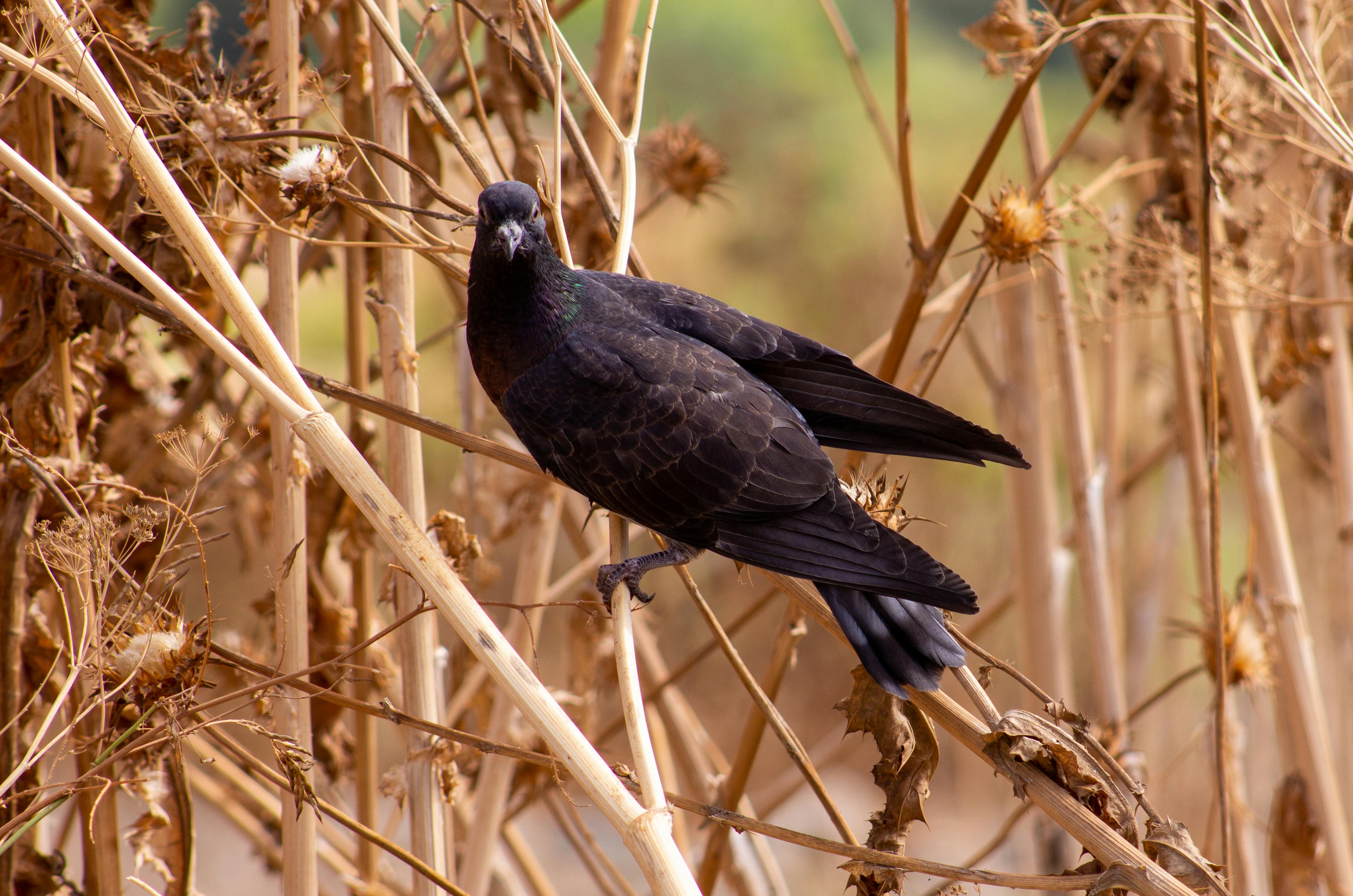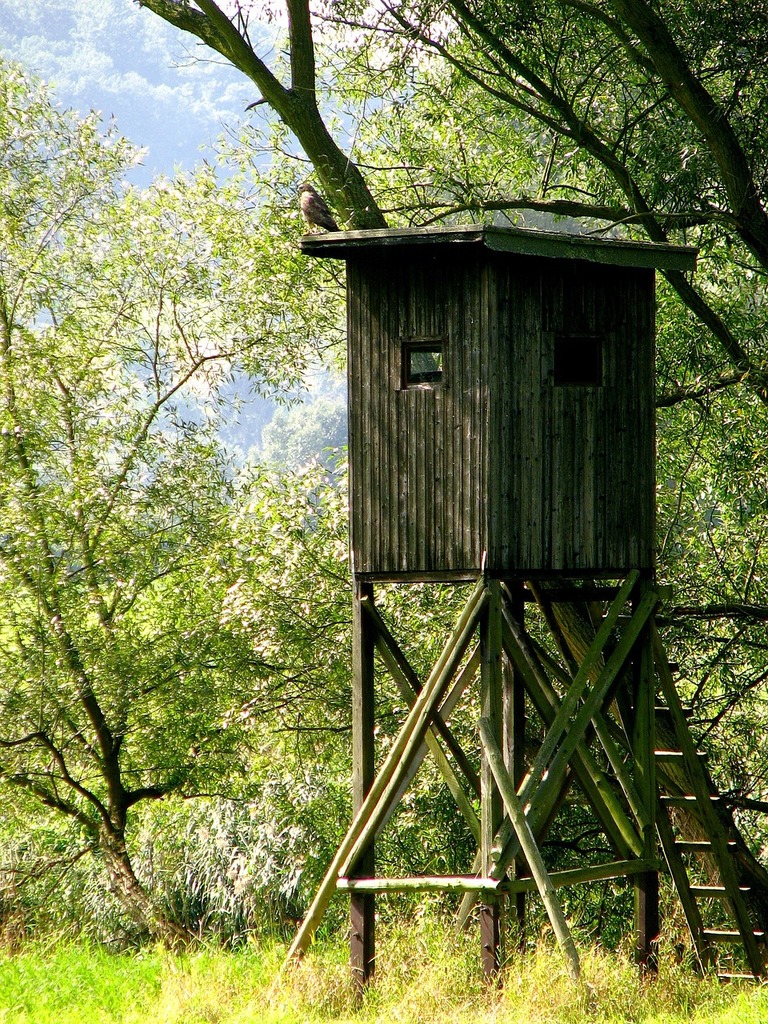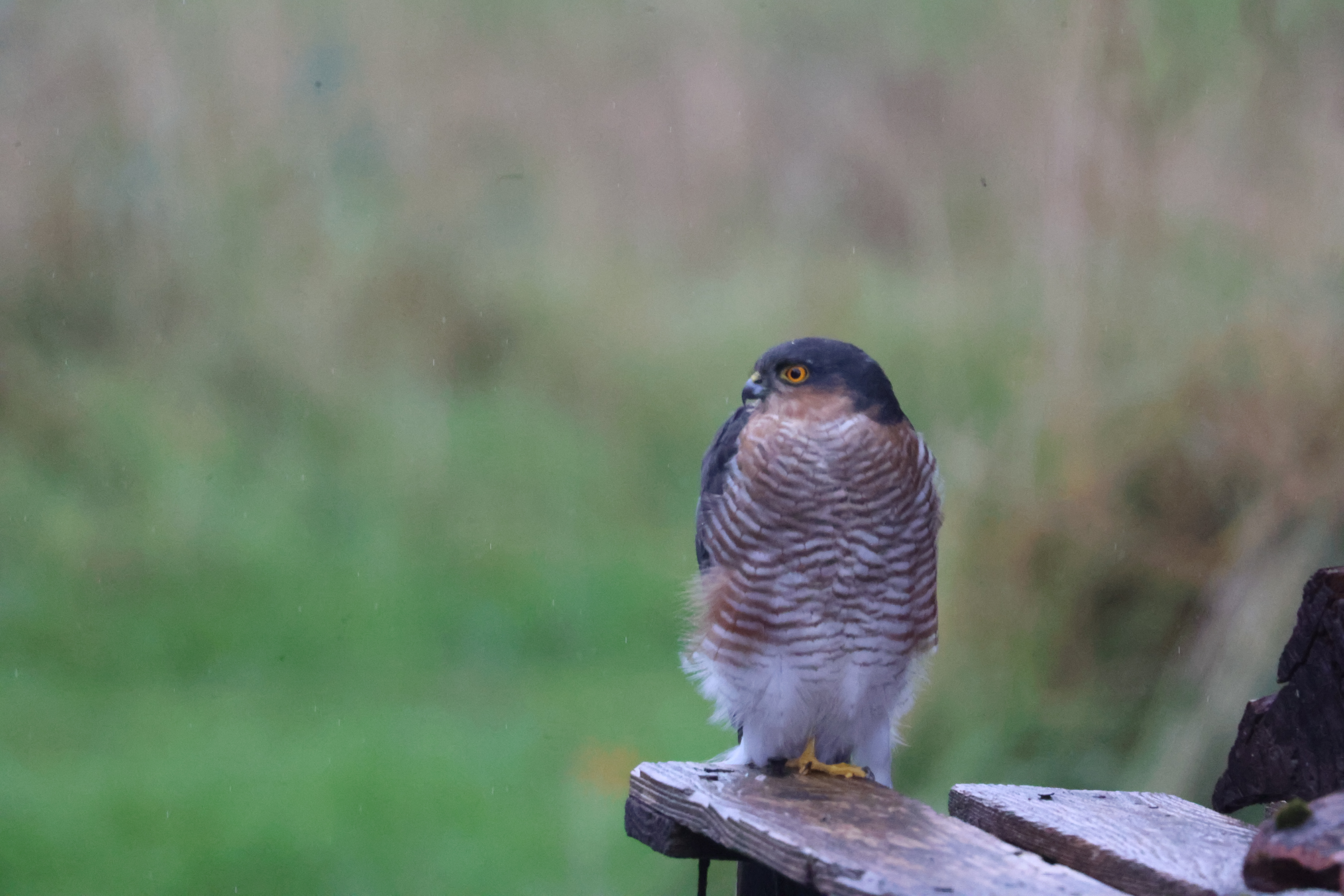Introduction: The Impact of Bird Poop on Wood Surfaces

Bird poop may seem harmless, but it can cause significant issues when it lands on wood surfaces like decks, furniture, and outdoor structures. To maintain the integrity of the wood and prevent potential damage, it’s crucial to address bird droppings promptly.
One of the primary concerns with bird poop is its corrosive nature. It contains uric acid, which can stain, discolor, and deteriorate wood if left untreated. Identifying bird poop on wood surfaces is relatively easy. It appears as white or off-white splatters with a liquid consistency that may darken over time.
Bird droppings may also contain seeds or debris, further contributing to the mess and potential damage. Regularly inspecting areas where bird poop may accumulate, such as outdoor furniture, birdhouses, fences, decks, and window sills, is essential.
By taking immediate action to remove bird poop from wood surfaces, you can prevent long-term damage, costly repairs, or replacements. In the following sections, we will explore effective methods and techniques to safely and efficiently clean bird droppings from wood surfaces.
Essential Supplies for Removing Bird Poop

To effectively and safely clean bird droppings from wood surfaces, you’ll need the following supplies:
Soft cloth or sponge
Use a soft cloth or sponge specifically designed for delicate surfaces to gently wipe away bird poop without causing scratches or damage.
Water

Lukewarm water is ideal for diluting and rinsing off bird droppings. Ensure you have an ample supply in a bucket or nearby water source.
Mild soap or detergent
Create a cleaning solution by adding a gentle, non-abrasive soap or mild detergent formulated for wood surfaces. This will effectively break down and remove the bird droppings without harming the wood.
Bucket or spray bottle
Use a bucket or spray bottle to hold the water and cleaning solution. A spray bottle allows for targeted cleaning without oversaturating the wood.
Plastic scraper or credit card
If the bird droppings have dried or hardened, gently loosen and remove the residue using a plastic scraper or credit card. Apply gentle pressure and work slowly to avoid scratching the wood.
Protective gloves
Wearing protective gloves is recommended to prevent direct contact with bird droppings and potential bacteria or parasites they may carry. Disposable or reusable cleaning gloves provide an extra layer of protection.
Optional: Wood cleaner or furniture polish
For additional cleaning or conditioning, consider using a specialized wood cleaner or furniture polish. Ensure the products are suitable for your specific type of wood and follow the manufacturer’s instructions.
Avoid using abrasive materials or harsh chemicals that can damage the wood finish. Be cautious with excessive water on certain wood types to prevent warping or other damage.
Having these supplies readily available will equip you to effectively remove bird poop stains and restore the beauty of your wood surfaces. In the next section, we will guide you through a step-by-step process for removing bird poop from wood, ensuring a clean and well-maintained appearance.
3. Step-by-Step Guide to Removing Bird Poop from Wood

To effectively remove bird droppings from wood surfaces without causing damage, follow these step-by-step instructions:
3.1 Identify the Bird Poop

Before you begin cleaning, examine the bird poop on the wood surface. Take note of its size, consistency, and age as these factors may influence the cleaning technique you should use.
3.2 Prepare the Cleaning Materials
Gather the necessary supplies before you start:
- Rubber gloves: Protect your hands from potential bacteria or pathogens in the bird droppings.
- Plastic scraper: Use a blunt-edged object to carefully scrape off as much dried or hardened bird poop as possible. Be gentle to avoid scratching or gouging the wood.
- Mild dish soap: Choose a gentle dish soap safe for wood surfaces.
- Warm water: Fill a bucket with warm water to create a cleaning solution.
- Sponge or soft cloth: Apply the cleaning solution and gently scrub the affected area.
- Bucket: Use it to mix the cleaning solution and hold the materials.
Avoid using harsh chemicals or abrasive materials that could damage the wood.
3.3 Protect Yourself and the Surrounding Area
Put on rubber gloves to shield your hands from potential hazards associated with bird droppings. If the wood is indoors or near delicate items, consider covering or moving them to prevent accidental damage during cleaning.
3.4 Remove Excess Bird Poop
Carefully scrape off as much dried or hardened bird poop as possible using a plastic scraper or blunt-edged object. Be cautious to avoid scratching or harming the wood.
3.5 Create a Cleaning Solution
Fill a bucket with warm water and add a small amount of mild dish soap to create a soapy mixture. This solution will help break down any remaining residue and enhance the cleaning process.
3.6 Test the Cleaning Solution
Before applying the cleaning solution to the entire affected area, test it on a small, inconspicuous area of the wood surface. This ensures that the cleaning solution does not negatively affect the wood’s finish or color. If any adverse reactions occur, consider using an alternative cleaning solution or seeking professional advice.
Tips and Tricks for Dealing with Difficult Bird Poop Stains

Dealing with stubborn bird poop stains on wood surfaces can be challenging, but with the right tips and tricks, you can effectively restore the cleanliness and beauty of your wood. Here are some methods to tackle those difficult stains:
Immediate Action (4.1)
When you spot fresh bird droppings on your wood, it’s crucial to act quickly to prevent them from drying and hardening. Here’s what you should do:
- Grab a paper towel or put on disposable gloves to avoid direct contact.
- Gently remove any excess poop without spreading it further.
Gentle Cleaning

Methods (4.2)
Before resorting to stronger solutions, it’s always recommended to start with gentle cleaning methods. Follow these steps:
- Prepare a cleaning solution by mixing mild soap or dishwashing liquid with warm water.
- Dampen a soft cloth or sponge with the cleaning solution.
- Gently blot the stained area, avoiding vigorous rubbing or scrubbing.
Vinegar Solution (4.3)
Vinegar is a natural cleaner with excellent stain-breaking properties. Here’s how you can use it to remove bird droppings:
- Mix equal parts of white vinegar and water in a spray bottle.
- Spray the vinegar solution onto the stain and allow it to sit for a few minutes.
- Gently wipe away the stain using a cloth or sponge.
Baking Soda Paste (4.4)
For tougher bird poop stains, baking soda can come to the rescue. Follow these steps to create a baking soda paste:
- Mix baking soda with a small amount of water to form a paste.
- Apply the paste directly to the stain and let it sit for a few minutes.
- Gently scrub the area with a soft brush, working the paste into the stain.
Commercial Wood Cleaners (4.5)
If the above methods don’t yield satisfactory results, you may consider using specialized wood cleaners available in the market. Follow the instructions provided by the manufacturer for best results.
Remember to always test any cleaning solution or product on a small, inconspicuous area of the wood before applying it to the stain.
By employing these tips and tricks, you’ll be equipped to handle difficult bird poop stains on your wood surfaces effectively.
After Care for Your Wood After Bird Poop Removal

Once you have successfully removed the bird poop from your wood surface, it’s important to perform proper aftercare to ensure the wood remains clean and undamaged. Here are some essential steps to follow:
Gentle Cleaning
After removing the bird poop, perform a gentle cleaning to eliminate any residual traces of cleaning solution or residue. Dilute a mild soap or wood cleaner in water and use a soft cloth or sponge to wipe down the affected area.
Thorough Rinsing
Thoroughly rinse the wood with clean water to remove any remaining soap or cleaner from the surface.
Drying
Allow the wood to air dry naturally after rinsing. Avoid using excessive heat or direct sunlight to speed up the drying process.
Conditioning
![]()
Depending on the type of wood and its finish, it may benefit from a conditioning treatment after bird poop removal. Wood conditioners or oils can help restore moisture and protect the wood from future damage.
Sealing
If the wood surface is unfinished or has a worn-out protective coating, applying a sealant or wood finish can provide added protection against future stains and damage.
By following these aftercare steps, you can ensure that your wood remains clean, well-maintained, and protected after removing bird poop.
Conclusion

Learning how to effectively remove bird poop stains from wood surfaces is essential for maintaining their cleanliness and beauty. By promptly taking action, using gentle cleaning methods, and employing effective stain-removal techniques such as vinegar and baking soda, you can restore the appearance of your wood. Additionally, proper aftercare, including gentle cleaning, thorough rinsing, drying, conditioning, and sealing, will help preserve the wood’s quality and extend its lifespan. By implementing these tips and tricks, you’ll be equipped to handle difficult bird poop stains and enjoy the natural beauty of your wood surfaces for years to come.
Conclusion: The Benefits of Learning How to Remove Bird Poop

Bird droppings may seem like a minor annoyance, but they can actually pose significant problems for wooden surfaces. By understanding how to effectively remove bird poop, you can reap several benefits that contribute to the longevity, aesthetics, and overall enjoyment of your wooden objects and outdoor spaces.
Prevents Damage to Wood Surfaces
Learning how to remove bird poop is crucial for preventing damage to wood surfaces. Bird droppings contain corrosive and acidic substances that gradually deteriorate wooden structures, furniture, and outdoor decks. Promptly cleaning off bird poop safeguards the integrity of your wood and extends its lifespan.
Maintains Aesthetics
Regularly removing bird poop helps preserve the aesthetic appeal of wood surfaces, ensuring they look clean, well-maintained, and visually pleasing. By taking the time to clean off bird droppings, you can preserve the natural charm of your wooden items.
Improves Hygiene and Sanitation
Bird droppings can harbor bacteria, parasites, and diseases that are harmful to humans and pets. Promptly removing bird poop from wood surfaces minimizes the chances of exposure to these pathogens, enhancing the overall hygiene and sanitation of your living spaces. This is especially important if you have young children or pets who may come into contact with the contaminated areas.
Preserves Durability

Regularly removing bird droppings helps preserve the structural integrity of wood surfaces, preventing issues such as rotting, discoloration, or weakening of the material. By maintaining your wood, you ensure it remains strong and durable for years to come.
Enhances Outdoor Enjoyment
Bird droppings can hinder your enjoyment of wooden decks, patios, or outdoor furniture. However, by learning how to effectively remove bird poop, you can create a cleaner and more inviting environment. This enables you to fully enjoy your outdoor spaces without the nuisance of unsightly bird droppings.
In conclusion, learning how to remove bird poop from wood surfaces is essential for maintaining the integrity, aesthetics, and hygiene of your wooden objects and outdoor areas. By preventing damage, preserving durability, and enhancing the overall enjoyment of your living spaces, you can ensure that bird droppings remain a minor inconvenience rather than a significant problem. Incorporate these techniques into your cleaning routine and reap the benefits of a cleaner, more beautiful, and long-lasting wood.
Frequently Asked Questions
Q1: How do you remove dried bird poop from wood surfaces?
A1: To remove dried bird poop from wood surfaces, start by gently scraping off as much of the dried residue as possible using a plastic scraper or credit card. Then, create a cleaning solution with mild soap or detergent and warm water. Apply the solution to the remaining stain using a soft cloth or sponge and gently scrub the area. Rinse with clean water and dry the wood thoroughly.
Q2: Can bird droppings damage wood?
A2: Yes, bird droppings can damage wood surfaces. Bird poop contains uric acid, which is corrosive and can stain, discolor, and deteriorate the wood if left untreated. It’s important to remove bird droppings promptly to prevent long-term damage.
Q3: What cleaning products should I avoid when removing bird poop from wood?

A3: Avoid using abrasive materials, harsh chemicals, or bleach when removing bird poop from wood surfaces. These can damage the wood finish. Instead, use mild soap or detergent specifically formulated for wood surfaces.
Q4: Can I use vinegar to remove bird droppings from wood?
A4: Yes, vinegar can be an effective natural cleaner for removing bird droppings from wood surfaces. Mix equal parts of white vinegar and water in a spray bottle. Spray the vinegar solution onto the stain, let it sit for a few minutes, and gently wipe away the stain with a cloth or sponge.
Q5: How do I prevent bird poop from staining my wood surfaces?
A5: To prevent bird poop from staining wood surfaces, it’s important to take immediate action and remove it as soon as possible. Regularly inspect areas where bird droppings may accumulate, such as outdoor furniture, birdhouses, fences, decks, and window sills. Additionally, consider using protective sealants or finishes on the wood to create a barrier against staining.

Leave a Reply